- Understanding The Importance Of Conversion Rates
- Strategy 1: Optimize Your Landing Pages
- Focus On User Experience
- Implement A/B Testing
- Strategy 2: Leverage Social Proof
- Display Testimonials And Reviews
- Showcase Case Studies
- Strategy 3: Craft Compelling Call-To-Actions (CTAs)
- Key Elements of Strong CTAs
- Strategy 4: Personalize User Experiences
- Use Dynamic Content
- Segment Your Audience
- Strategy 5: Simplify The Checkout Process
- Strategy 6: Improve Website Load Speed
- Reduce Large File Sizes
- Leverage Browser Caching
- Use a Content Delivery Network (CDN)
- Minify Your Code
- Optimize Server Performance
- Monitor Load Times
- Strategy 7: Harness The Power Of Retargeting Ads
- Benefits of Retargeting Ads
- Effective Retargeting Strategies
- Measurement and Optimization
- Strategy 8: Offer Incentives And Discounts
- Strategy 9: Use Video Content To Engage Users
- Strategy 10: Analyze And Optimize Using Data
- Monitor Key Metrics
- Continuously Refine Campaigns
- Conclusion
- Frequently Asked Questions
- What is a conversion rate?
- Why are conversion rates important?
- How can I improve my website’s conversion rate?
- Why is A/B testing important for conversions?
- How does website load speed affect conversions?
- What role does social proof play in boosting conversions?
- How can I improve the checkout process to reduce cart abandonment?
- Are discounts and incentives effective for conversions?
- Why should I use video content on my website?
- How can data analysis enhance my conversion strategies?
In the ever-evolving digital landscape, boosting your conversion rates is more critical than ever. As consumer behavior shifts and competition grows, you need actionable strategies that deliver real results. It’s not just about driving traffic—it’s about turning visitors into loyal customers who trust your brand.
2025 promises new challenges and opportunities for businesses looking to optimize their online performance. By staying ahead of trends and leveraging proven techniques, you can create a seamless customer journey that converts. Ready to transform your approach and see measurable growth? Let’s dive into strategies designed to take your conversions to the next level.
Understanding The Importance Of Conversion Rates
Conversion rates represent the percentage of users completing a desired action on your platform, such as making a purchase, signing up for a newsletter, or downloading content. These metrics directly impact your business’s revenue and growth.
High conversion rates indicate that your marketing efforts, website design, and user experience align with customer needs and preferences. Consistently optimizing these rates helps allocate resources effectively and enhances return on investment (ROI).
Poor conversion rates, in contrast, signal underlying issues like unclear call-to-action (CTA), complex navigation, or irrelevant content. Addressing these issues ensures an improved customer journey and higher user engagement.
Prioritizing conversion rates allows you to measure the effectiveness of campaigns and identify opportunities for improvement. Tracking key performance indicators (KPIs) and leveraging A/B testing boosts your ability to make informed decisions.
Strategy 1: Optimize Your Landing Pages
Enhancing landing pages ensures users take desired actions, driving higher conversion rates. A well-designed landing page removes barriers, offering a seamless experience for visitors.
Focus On User Experience
Prioritize simplicity and clarity in landing page design. Clear headlines, concise content, and intuitive layouts guide users effortlessly. Use responsive designs to ensure functionality across devices, as 55% of web traffic comes from mobile users (Statista, 2023). Fast page load speeds reduce bounce rates, with Google suggesting loads under 2 seconds. Incorporate high-quality visuals, like images or videos, to increase engagement and convey value.
Implement A/B Testing
A/B testing identifies elements that improve performance. Compare variations in headlines, colors, CTAs, or forms to measure impact on conversions. For example, a study found that changing CTA button color alone can increase conversion rates by 21% (HubSpot, 2023). Test only one variable at a time to isolate results accurately. Use analytics tools like Google Optimize or Optimizely for data-driven insights, enabling precise optimizations.
Strategy 2: Leverage Social Proof
Social proof builds trust and influences potential customers by demonstrating the positive experiences of others. Implementing this strategy validates your brand’s credibility, encouraging users to convert.
Display Testimonials And Reviews
Highlight testimonials and reviews from satisfied customers to establish trust. Use real names, specific details, and photos when possible to increase authenticity. Positive reviews, such as comments about exceptional service or product quality, make undecided visitors feel more confident in their decisions. Add customer feedback to prominent site locations like product pages, homepage banners, or checkout sections for greater impact.
Encourage users to leave reviews through follow-up emails or rewards programs. Display ratings from trusted platforms like Google or Yelp to strengthen credibility. Including peer opinions in marketing emails or ad campaigns ensures a cohesive use of testimonials across channels.
Showcase Case Studies
Provide detailed case studies to demonstrate tangible results achieved by your product or service. Focus on quantifiable success metrics, such as a 50% increase in sales or 30% cost savings, to make your content more persuasive. Case studies help potential customers visualize their success by showcasing real-world applications aligned with their needs.
Use professional layouts with visual aids like charts or images that break down key data points. Collect permission from successful clients to feature their stories, and link these studies on your website, blog posts, or social media channels. Offering downloadable case studies behind lead capture forms strengthens engagement while boosting conversions.
Strategy 3: Craft Compelling Call-To-Actions (CTAs)
Crafting effective CTAs motivates users to complete desired actions, directly impacting your conversion rates. Effective CTAs are clear, action-oriented, and tailored to user intent, simplifying the decision-making process for visitors. Generic phrases like “Click Here” or “Submit” underperform compared to context-specific options such as “Get Your Free Trial” or “Claim Discount Today.”
Key Elements of Strong CTAs
- Clarity: Use concise language, like “Download the Guide” or “Start Saving Now,” to make the action clear. Avoid vague instructions to reduce hesitation.
- Action Verbs: Begin CTAs with strong verbs like “Explore,” “Join,” or “Discover” to instill urgency and encourage clicks.
- Personalization: Tailor CTAs to your audience’s needs. For example, e-commerce sites can use “Find Your Perfect Product” or “Upgrade Your Style” to resonate with shoppers.
- Design Visibility: Use contrasting colors and readable fonts to ensure CTAs stand out. A/B testing can optimize placement, size, and color to drive better engagement.
- E-commerce: “Add to Cart – Limited Stock!”
- SaaS: “Start Free Trial – No Credit Card Needed.”
- Content Marketing: “Access the Full Report for Free.”
- Subscription Services: “Unlock Exclusive Benefits Today.”
Place CTAs strategically on landing pages, within blog posts, or under product descriptions to improve conversions, considering user intent and scrolling behavior.
Strategy 4: Personalize User Experiences
Personalizing user experiences enhances engagement, making customers more likely to convert. Tailor every interaction to match individual preferences and behaviors.
Use Dynamic Content
Dynamic content responds to user data or actions in real time, providing personalized experiences. For example, displaying product recommendations based on browsing history or showing exclusive offers tailored to user interests creates relevance. Use tools like AI-powered recommendation engines to automate this process, ensuring updated, context-specific content is delivered seamlessly. Prioritize dynamic headers, email subject lines, and homepage visuals to keep users engaged.
Segment Your Audience
Audience segmentation allows you to target specific groups with customized content. Divide users based on factors like demographics, behavior, or purchase history to deliver messages that resonate. For example, create separate email campaigns for first-time visitors versus returning customers, or offer location-specific discounts. Leverage marketing platforms to automate segmentation, applying insights from analytics tools to refine your approach and maximize conversion potential.
Strategy 5: Simplify The Checkout Process
Streamlining your checkout process reduces cart abandonment and improves conversion rates. A complicated or lengthy checkout can frustrate customers, discouraging them from completing their purchases.
- Minimize Form Fields: Include only essential fields like name, email, shipping address, and payment information. For example, avoid asking for unnecessary details such as secondary phone numbers unless absolutely required.
- Enable Guest Checkout: Allow users to complete purchases without creating an account. This eliminates friction, especially for first-time buyers.
- Offer Multiple Payment Options: Include widely-used methods like credit cards, debit cards, PayPal, Apple Pay, and Google Pay to cater to diverse preferences.
- Optimize Mobile Checkout: Ensure your checkout page adapts seamlessly to mobile devices. Use larger buttons and autofill features to simplify the process.
- Display Progress Indicators: Indicate checkout steps to reassure users and reduce perceived effort. Examples include percentage bars or labeled sections like “Shipping” and “Payment.”
- Provide Clear Error Messages: Highlight specific issues with real-time feedback, such as invalid card numbers or incorrect ZIP codes.
- Incorporate Trust Signals: Reinforce security with badges like SSL certificates or icons indicating secure payments to enhance user confidence.
These steps ensure a smoother checkout experience, reducing drop-offs and increasing successful transactions.
Strategy 6: Improve Website Load Speed
Faster website load speeds directly affect user experience and conversion rates. Research from Google shows that a 1-second delay in page loading can reduce conversions by 7%. Optimizing your load speed ensures visitors engage with your content instead of leaving due to frustration.
Reduce Large File Sizes
Compress large image and video files without compromising quality. Tools like TinyPNG or ImageOptim help reduce file sizes, resulting in shorter loading times. Choose modern formats like WebP over traditional JPG or PNG.
Leverage Browser Caching
Enable browser caching to store static resources locally. Caching reduces server requests for repeat visitors, improving load speed for returning users.
Use a Content Delivery Network (CDN)
CDNs distribute site content across multiple servers worldwide. This minimizes loading time by delivering data from the nearest server. Platforms like Cloudflare or Akamai improve performance globally.
Minify Your Code
Compress CSS, JavaScript, and HTML files. Removing unnecessary characters, spaces, or comments ensures faster browser rendering. Tools like UglifyJS or CSSNano simplify this process.
Optimize Server Performance
Upgrade to high-performance hosting solutions with faster response times. Servers equipped with HTTP/2 protocol and SSD storage handle more requests efficiently, reducing delays.
Monitor Load Times
Track performance with tools like Google PageSpeed Insights or GTmetrix. These platforms provide actionable recommendations to resolve speed-related issues.
Improving load speed benefits user retention, search rankings, and ultimately, your conversions.
Strategy 7: Harness The Power Of Retargeting Ads
Retargeting ads help re-engage users who previously interacted with your site but didn’t convert. These ads keep your brand top-of-mind for potential customers, increasing the likelihood of conversion.
Benefits of Retargeting Ads
- Re-engaging Visitors: Retargeting lets you reach users who left without taking action, such as abandoning their shopping carts. For example, displaying ads featuring items users browsed or added to their carts can encourage them to return and complete their purchases.
- Boosting Conversion Rates: Retargeting ad click-through rates are 10 times higher than standard display ads, providing you with an effective tool for maximizing ROI.
- Strengthening Brand Recall: Consistently appearing in relevant ad spaces ensures customers remember your brand when they’re ready to purchase.
Effective Retargeting Strategies
- Segment Audiences: Separate users into distinct groups based on behavior, such as cart abandoners, returning visitors, or one-time buyers. This segmentation allows you to create tailored ads, improving relevance and appeal.
- Use Dynamic Ads: Display ads that update automatically with personalized content, like products viewed by a specific user. Platforms like Google Ads and Facebook Ads support dynamic retargeting to deliver customized experiences.
- Leverage Multiple Platforms: Use diverse advertising networks, including social media, search engines, and other display networks, to increase visibility across user touchpoints. For instance, Facebook and Instagram are excellent for visual-based retargeting campaigns.
- Set Frequency Caps: Avoid overwhelming users with excessive exposure by limiting how often they see your ads. Balanced frequency ensures your retargeting campaigns remain effective rather than intrusive.
- Offer Incentives: Provide limited-time discounts or free shipping in retargeting ads to entice hesitant buyers into completing their transactions.
Measurement and Optimization
Track key campaign metrics, like click-through rates (CTR) and return on ad spend (ROAS), to assess performance. Use A/B testing to determine which ad formats, messages, and visuals resonate most with your audience. Adjust underperforming campaigns promptly to maximize conversions and avoid wasted ad spend.
Strategy 8: Offer Incentives And Discounts
Incentives and discounts create a sense of urgency and motivate potential customers to take immediate action. These promotional offers attract price-sensitive shoppers and build loyalty among existing customers.
- Limited-Time Discounts: Highlight time-sensitive deals like a 20% discount available for 48 hours. This scarcity tactic encourages faster decision-making and reduces procrastination.
- Exclusive Member Incentives: Reward loyal customers with exclusive benefits, such as 15% off for subscribers or early access to sales. These perks enhance retention and foster long-term engagement.
- Bundle Offers: Encourage higher spending by creating value bundles, such as buy-one-get-one (BOGO) deals or discounted product combinations. These offers improve average order value while giving customers extra value.
- Referral Discounts: Incentivize customers to refer others by providing both parties with rewards, such as $10 credit for each successful referral. This strategy boosts customer acquisition with minimal costs.
- Seasonal Campaigns: Align discounts with seasonal events or holidays like Black Friday or New Year’s sales. These campaigns capitalize on heightened shopping intent during key periods.
Clear communication of these offers is essential. Display them prominently on your homepage, product pages, and via email campaigns to ensure maximum visibility.
Strategy 9: Use Video Content To Engage Users
Integrate video content into marketing to captivate and retain user attention. Videos communicate information quickly and are proven to enhance user engagement, which positively impacts conversion rates. According to Wyzowl’s 2023 Video Marketing Statistics, 91% of businesses consider video content a key marketing tool, and 87% notice an improved website traffic rate due to video usage.
- Product Demonstrations: Highlight your product’s features, functionality, or benefits through clear, concise videos. For example, use explainer clips to showcase how a product solves user problems.
- Customer Testimonials: Share authentic video reviews from satisfied customers. Real visuals and voices build trust faster than text-based testimonials.
- Tutorials: Provide step-by-step guides or how-tos to help audiences use your products effectively. For instance, software businesses can share setup or troubleshooting videos to assist users.
- Interactive Content: Use features like clickable annotations or embedded CTAs in videos to drive specific actions. For example, direct viewers to a sign-up page or product purchase with in-video links.
Place videos on landing pages to increase dwell time and conversions. Embed them in emails for up to 300% higher click-through rates, according to HubSpot. Optimize video quality and page load speed by compressing files and using platforms like YouTube or Wistia for seamless playback. Include subtitles, as 69% of people view videos without sound in public, per research by Verizon Media.
Strategy 10: Analyze And Optimize Using Data
Leveraging data insights drives smarter decisions and enhances conversion rates. Continuous analysis and optimization ensure your strategies align with customer behavior and market trends.
Monitor Key Metrics
Track essential metrics to evaluate campaign effectiveness. Focus on conversion rate, bounce rate, average session duration, and cart abandonment rate. Use tools like Google Analytics or heatmaps to identify user actions, such as clicking a CTA or leaving a page. Understanding these behaviors clarifies areas needing improvement.
Segment data by audience demographics, traffic sources, and device types. For example, if mobile users convert less, prioritize mobile experience enhancements. Accurate tracking reveals trends and gaps that inform targeted optimizations.
Continuously Refine Campaigns
Adjust strategies based on real-time data insights. Conduct A/B tests to compare variations in content, layouts, or landing page designs. For example, test multiple headlines to identify which generates higher engagement. Experimentation uncovers the most effective elements for conversions.
Allocate resources to high-performing channels by analyzing ROI metrics. If social media ads outperform email campaigns, shift focus accordingly. Regularly updating campaigns aligns messaging with shifting consumer preferences and competitor activities, ensuring sustained effectiveness.
Conclusion
Boosting your conversion rates in 2025 requires a proactive approach and a commitment to refining your strategies. By staying adaptable and leveraging data-driven insights, you can create a seamless customer journey that not only meets but exceeds user expectations. Each strategy you implement brings you closer to turning more visitors into loyal customers, driving measurable growth for your business.
The key is to remain focused on your audience’s needs, continuously test your efforts, and embrace innovation to stay ahead of the competition. With the right tools and techniques, you’re well-equipped to achieve success in the evolving digital landscape.
Frequently Asked Questions
What is a conversion rate?
A conversion rate is the percentage of users who complete a desired action on a platform, such as making a purchase, signing up for a newsletter, or downloading content. It is a key metric that reflects how effectively your website or marketing efforts are achieving their goals.
Why are conversion rates important?
Conversion rates directly impact a business’s revenue and growth. High conversion rates indicate effective marketing and user experience strategies, while low conversion rates may highlight issues like poor website design, unclear CTAs, or slow loading times.
How can I improve my website’s conversion rate?
You can improve conversion rates by optimizing landing pages, simplifying the checkout process, using responsive designs, ensuring fast load speeds, leveraging social proof, crafting effective CTAs, and offering personalized user experiences. A/B testing can help identify what works best.
Why is A/B testing important for conversions?
A/B testing allows you to compare two different versions of a webpage or element to see which performs better. It provides data-driven insights to help make informed decisions, often leading to small but impactful improvements in conversion rates.
How does website load speed affect conversions?
Website load speed significantly impacts user experience. Slow-loading pages increase bounce rates and reduce conversions. Optimizing website speed keeps visitors engaged, boosts retention, and enhances search rankings.
What role does social proof play in boosting conversions?
Social proof, such as testimonials, reviews, and case studies, builds trust and influences potential customers. Displaying satisfied customer feedback and measurable results can encourage visitors to convert.
How can I improve the checkout process to reduce cart abandonment?
Simplify the checkout process by minimizing form fields, offering guest checkout, providing multiple payment options, and being transparent about costs. A smooth checkout experience reduces frustration and increases completed purchases.
Are discounts and incentives effective for conversions?
Yes, offering promotions, discounts, or limited-time deals can create urgency and motivate visitors to take action. These incentives help overcome hesitation and drive conversions.
Why should I use video content on my website?
Video content engages users more effectively than text or images. Product demos, tutorials, and testimonials can capture attention, build trust, and convey information quickly, resulting in higher conversion rates.
How can data analysis enhance my conversion strategies?
Data analysis provides valuable insights into user behavior and campaign performance. Monitoring metrics like conversion rate, bounce rate, and cart abandonment rate helps identify areas for improvement. Continuous optimization using A/B testing ensures your strategies remain effective.












